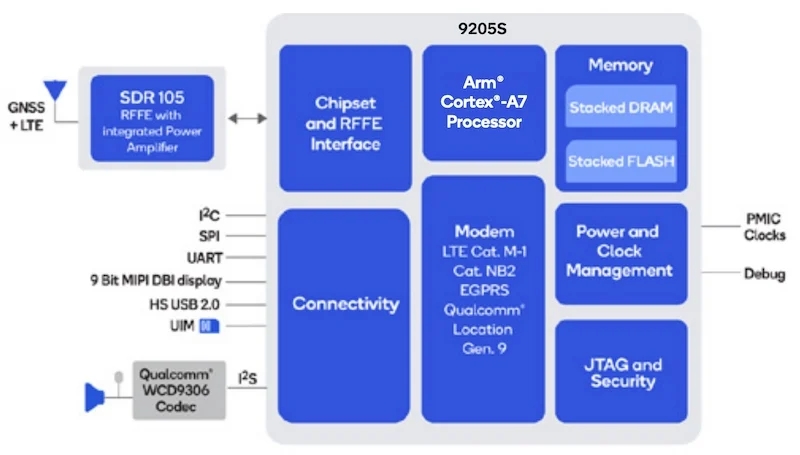Qualcomm Releases Satellite Modems for Remote IoT Asset Tracking
The new modems are designed for IoT non-terrestrial networks, making them potentially useful for remote monitoring and asset tracking.
Qualcomm has historically been a leader in the wireless communications industry, notably being the main provider of 5G modems for the iPhone and many other top-tier devices. However, not all wireless devices need cellular connectivity; some require access to non-terrestrial networks (NTNs).
In off-grid applications like mining and agriculture, remote asset tracking and equipment monitoring devices may not be able to access cellular networks. In these applications, NTNs, like satellite connectivity, tend to be the only way to ensure connectivity.
This week, Qualcomm announced the release of two new modem solutions designed specifically for IoT-NTN (Internet-of-Things non-terrestrial networks) applications..jpg)
Qualcomm launched the new modems in collaboration with NTN service provider Skylo to facilitate low-power, high-performance connectivity for IoT devices across satellite and cellular networks.
In this piece, we’ll take a look at the two new modems to see what they offer and how they compare to each other.
The 212S Modem
The first of the two offerings is the 212S modem, a 5G IoT-NTN connectivity solution designed to enable off-grid, stationary IoT applications for sensing and monitoring. Designed to be cost-optimized and low-power, the 212S is designed for applications with multi-year operations..jpg)
Block diagram of the 212S modem.
A look at the modem’s block diagram shows that it features a 204 MHz Arm Cortex-M3 CPU as the main compute and an LTE modem that supports Rel.14 LTE Cat-NB2 and Rel.17 NB-IoT over NTN connectivity. Qualcomm also claims that the 212S is its first IoT-NTN-only modem that supports the 3GPP Release 17 standards for satellite communications.
To communicate with the device within a system, the 212S modem also features support for 2x I2C channels, 2x SPI channels, 3x UART connectivity, and 26 general-purpose I/Os total. The device also features four integrated ADCs and runs at a supply voltage range from 2.2 V to 4.5 V.
The 9205S Modem
In addition to the 212S modem, Qualcomm also released the 9205S modem. The 9205S modem allows IoT devices to connect to both IoT-NTN (i.e., satellite) networks as well as conventional cellular networks.
Built around an 800 MHz Arm Cortex-A7 processor powered from a supply voltage range of 2.4 V to 4.8 V, the new modem can be attached to any host MCU as a peripheral to provide satellite connectivity. Featuring a cellular modem with download speeds up to 588 kbps and upload speeds up to 158.5 kbps, the device supports a number of cellular and satellite communication protocols as well as GNSS to provide location data.
Block diagram of the 9205S modem.
From a connectivity perspective, the device supports interfaces including PWM, USB 2.0, and SPI. Qualcomm recommends the device be paired with other Qualcomm solutions, such as the SDR105 radio transceiver and front end, the WCD9306 audio codec, and the PME9205 power management IC (PMIC).
Qualcomm states that the 9205S modem is best suited for asset-tracking applications, such as shipping container tracking, animal tracking, and fleet management.


.jpg)
.jpg)